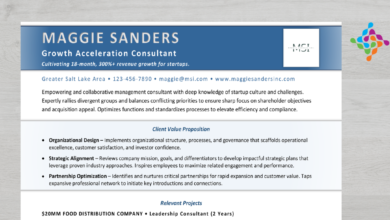Industrial Cutting and Waste Reduction Strategies
Advertisement
Introduction
Industrial cutting processes are crucial in various sectors, from manufacturing to construction. These processes involve the separation of materials into desired shapes and sizes using various equipment and techniques. However, industrial cutting also produces waste, which can have detrimental effects on the environment and business operations. Waste reduction strategies are essential to minimize the environmental impact and optimize efficiency in industrial cutting processes.
By implementing effective waste reduction strategies, businesses can not only reduce their environmental footprint but also improve their bottom line. From recycling scrap materials to optimizing cutting techniques, there are various ways to enhance efficiency and sustainability in industrial cutting operations. This article will explore the strengths and weaknesses of industrial cutting and waste reduction strategies, providing insightful information for businesses looking to improve their practices.
Strengths of Industrial Cutting and Waste Reduction Strategies
1. Increased Efficiency: One of the primary strengths of implementing waste reduction strategies in industrial cutting is the potential for increased efficiency. By minimizing waste, businesses can optimize their processes and improve overall productivity. This can lead to cost savings and enhanced competitiveness in the market.
2. Environmental Benefits: Waste reduction strategies in industrial cutting can have significant environmental benefits. By reducing the amount of waste produced, businesses can lower their carbon footprint and contribute to a more sustainable future. This is particularly important in industries with high waste generation, such as manufacturing and construction.
3. Cost Savings: Waste reduction strategies can also result in cost savings for businesses. By recycling scrap materials and optimizing cutting processes, businesses can reduce their waste disposal costs and generate additional revenue from recycled materials. This can have a positive impact on the bottom line and improve overall financial performance.
4. Compliance with Regulations: Implementing waste reduction strategies in industrial cutting can help businesses comply with environmental regulations and standards. By reducing waste and minimizing environmental impact, businesses can avoid fines and penalties while demonstrating their commitment to sustainability and corporate responsibility.
5. Improved Reputation: Businesses that prioritize sustainability and waste reduction are often viewed more favorably by customers, investors, and the public. By implementing effective waste reduction strategies, businesses can enhance their reputation and build trust with stakeholders, leading to increased opportunities for growth and success.
6. Innovation and Creativity: Waste reduction strategies in industrial cutting can drive innovation and creativity within organizations. By challenging traditional practices and exploring new ways to minimize waste, businesses can discover opportunities for improvement and differentiation in the market. This can lead to a competitive advantage and sustainable success in the long run.
7. Employee Engagement: Engaging employees in waste reduction initiatives can boost morale and productivity within the organization. By involving employees in the development and implementation of waste reduction strategies, businesses can foster a culture of sustainability and teamwork. This can lead to a more motivated and committed workforce, ultimately benefiting the business as a whole.
Weaknesses of Industrial Cutting and Waste Reduction Strategies
1. Initial Investment: Implementing waste reduction strategies in industrial cutting may require an initial investment in equipment, training, and technology. Businesses may incur upfront costs to upgrade their cutting processes and implement new waste reduction measures, which can be a barrier for some organizations, particularly small and medium-sized enterprises.
2. Operational Challenges: Transitioning to new waste reduction strategies can pose operational challenges for businesses. Changes in cutting techniques, equipment, and processes may require time and resources to implement effectively. This can lead to disruptions in production and potential resistance from employees who are accustomed to existing practices.
3. Limited Resources: Some businesses may face limitations in resources, such as space and manpower, which can impact their ability to implement waste reduction strategies effectively. Lack of adequate facilities for storing and recycling waste materials, as well as insufficient staff training on waste reduction practices, can hinder the success of sustainability initiatives in industrial cutting.
4. Competitive Pressures: In industries with intense competition, businesses may be hesitant to invest in waste reduction strategies due to concerns about cost and profitability. Balancing the need for sustainability with the pressure to remain competitive in the market can be a challenging dilemma for businesses, particularly those operating in price-sensitive sectors.
5. Regulatory Compliance: While implementing waste reduction strategies can help businesses comply with environmental regulations, staying abreast of constantly evolving laws and standards can be a daunting task. Businesses may struggle to keep up with changing requirements and ensure full compliance, leading to potential legal risks and reputational damage.
6. Resistance to Change: Employees and stakeholders within the organization may resist changes to existing cutting processes and waste reduction strategies. Resistance to change can hinder the successful implementation of new initiatives and prevent businesses from realizing the benefits of improved efficiency and sustainability. Overcoming resistance through effective communication and engagement is essential for the success of waste reduction efforts.
7. Measurement and Evaluation: Measuring the impact of waste reduction strategies and evaluating their effectiveness can be challenging for businesses. Without proper data collection and analysis, businesses may struggle to assess the ROI of their sustainability initiatives and make informed decisions about future investments. Establishing key performance indicators and tracking progress towards waste reduction goals is essential for driving continuous improvement and achieving long-term success.
Industrial Cutting and Waste Reduction Strategies Table
| Waste Reduction Strategy | Benefits | Challenges |
|---|---|---|
| Recycling Scrap Materials | Cost Savings, Environmental Benefits | Initial Investment, Operational Challenges |
| Optimizing Cutting Techniques | Increased Efficiency, Innovation | Resistance to Change, Competitive Pressures |
| Employee Engagement | Productivity, Reputation | Limited Resources, Measurement and Evaluation |
Frequently Asked Questions
1. What are the key benefits of implementing waste reduction strategies in industrial cutting?
Implementing waste reduction strategies in industrial cutting can lead to increased efficiency, cost savings, environmental benefits, and improved reputation.
2. What are the main challenges businesses face when implementing waste reduction strategies?
Businesses may encounter challenges such as initial investment costs, operational disruptions, limited resources, competitive pressures, regulatory compliance, resistance to change, and difficulties in measuring and evaluating the impact of sustainability initiatives.
3. How can businesses overcome resistance to change in waste reduction efforts?
Businesses can overcome resistance by involving employees in the development of waste reduction strategies, providing training and support, communicating the benefits of sustainability initiatives, and demonstrating leadership commitment to environmental responsibility.
4. What are some best practices for measuring the effectiveness of waste reduction strategies?
Best practices include establishing key performance indicators, conducting regular audits and assessments, tracking progress towards waste reduction goals, and leveraging data analytics to evaluate the impact of sustainability initiatives on business performance.
5. How can businesses ensure compliance with environmental regulations in industrial cutting?
Businesses can ensure compliance by staying informed about relevant laws and standards, implementing appropriate waste management practices, conducting regular training and audits, and engaging with regulatory authorities to address any compliance issues proactively.
6. What role does employee engagement play in the success of waste reduction strategies?
Employee engagement is crucial for the success of waste reduction strategies, as motivated and informed employees can drive sustainability initiatives, identify opportunities for improvement, and promote a culture of environmental responsibility within the organization.
7. How can businesses enhance their competitiveness through waste reduction strategies?
Businesses can enhance their competitiveness by differentiating themselves through sustainable practices, reducing production costs through waste minimization, attracting environmentally conscious customers and investors, and positioning themselves as industry leaders in environmental stewardship.
Conclusion
Industrial cutting and waste reduction strategies are essential for businesses looking to optimize efficiency, minimize environmental impact, and improve overall sustainability. By leveraging the strengths and addressing the weaknesses of waste reduction initiatives, businesses can enhance their competitiveness, reduce costs, and foster a culture of environmental responsibility. It is imperative for businesses to invest in innovative cutting techniques, employee engagement, and continuous improvement to drive long-term success and contribute to a more sustainable future.
Take action now to implement effective waste reduction strategies in your industrial cutting processes and join the movement towards a greener and more efficient future for your business and the planet.
*This article is for informational purposes only. The information provided is not legal, financial, or professional advice. Businesses should consult with experts in the field to tailor waste reduction strategies to their specific needs and circumstances.








